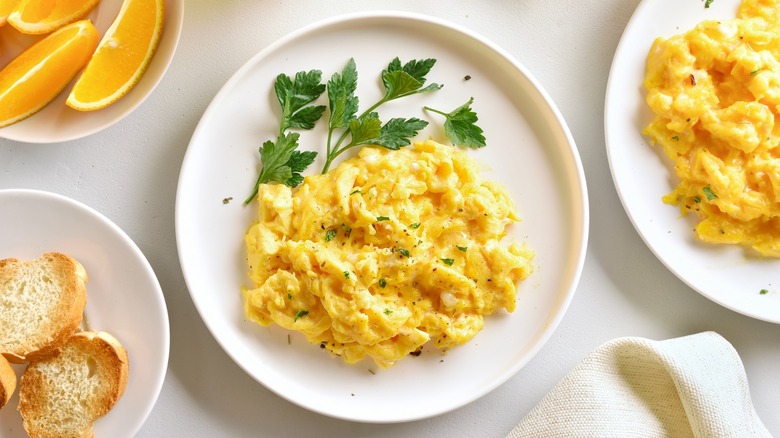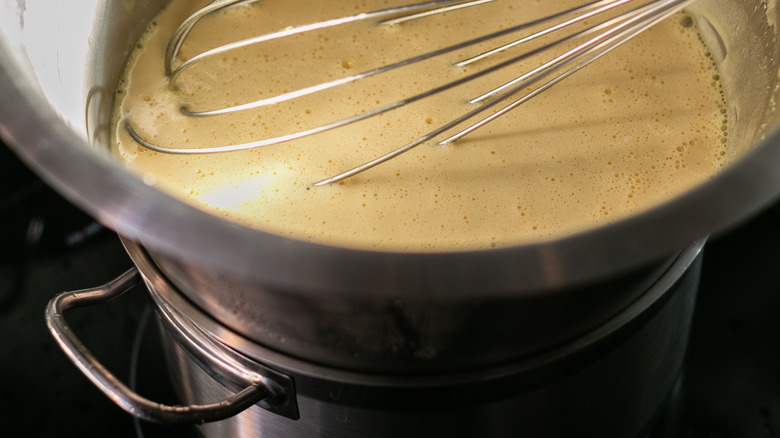For More Control Over Scrambled Eggs, Make Them In A Double-Boiler
Scrambled eggs are a breakfast staple, loved around the world for their rich flavor, creaminess, and versatility. They are quick to make; but it takes a bit of technique to cook them so that they are evenly cooked, don't stick to the pan, and don't turn out dry. Many would think that this only refers to how the eggs are stirred or how greased the skillet is. However, the key to making perfect scrambled eggs also lies in temperature control.
Exploratorium explains that high heat agitates the slowly-moving protein molecules in the egg whites and resets their bonds, which results in them becoming dry and rubbery. Based on this principle, it seems like all you need to do is cook beaten eggs on a low flame until they reach the right consistency; but that's not always achievable with a non-stick pan or a cast iron skillet, even with the addition of milk, cream, and butter. Interestingly, the French method of making luxurious scrambled eggs involves using a double boiler. This technique uses indirect heat to prevent the eggs from drying out, getting overcooked, or sticking to the skillet. It also allows for a more controlled application of gentle heat to the eggs to produce the coveted velvety texture without the addition of extra butter or cream.
How to cook scrambled eggs in a double boiler
Although a double boiler is generally used to melt chocolate and gelatin or to make desserts and sauces, it will be a game changer for your scrambled eggs — albeit with a relatively long cooking time.
Begin by heating water in a saucepan until it is simmering. Meanwhile, using a fork, beat the eggs lightly with salt and pepper. You can also add milk, cream, butter, grated cheese, vegetables, or herbs to the eggs. Next, pour the mixture into a heatproof bowl and place it over the pot of water (make sure the water doesn't touch the bowl). If your recipe calls for clarified butter (ghee), heat it in a non-stick pan until it's frothy, and then add it to the mixture.
Gently stir the eggs with a silicone spatula while also scraping the bottom of the bowl. When curds begin to form, delicately fold them into the liquid for 10-15 minutes. Tasting Table points out that this motion will discourage the formation of pockets of trapped air and will result in soupy-looking eggs. When the eggs are almost done, carefully remove the bowl from the heat, and continue stirring them until they reach your desired consistency.
The double boiler method is a sure shot at elevating the humble egg to gourmet status; and, with a little bit of patience and practice, you'll be able to master it and impress your family and friends.

